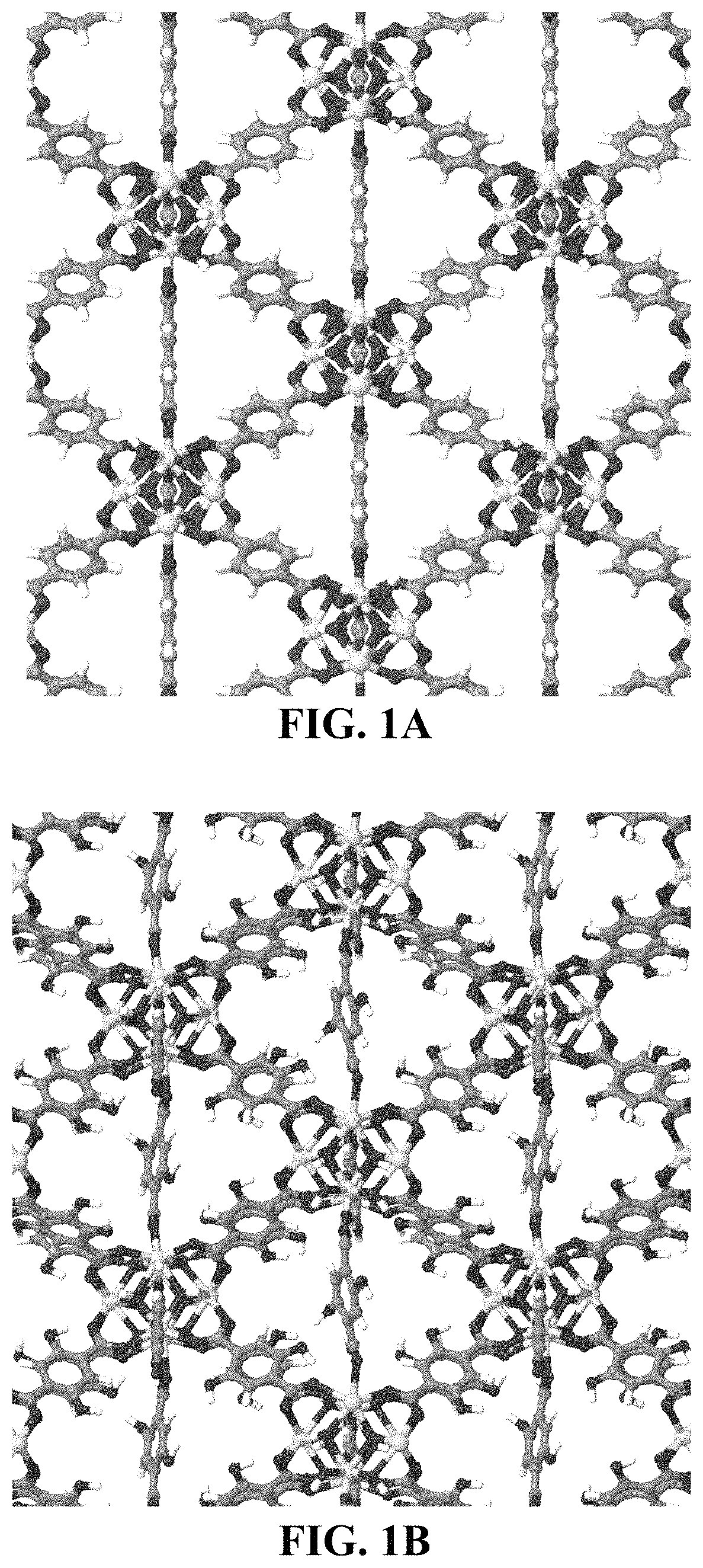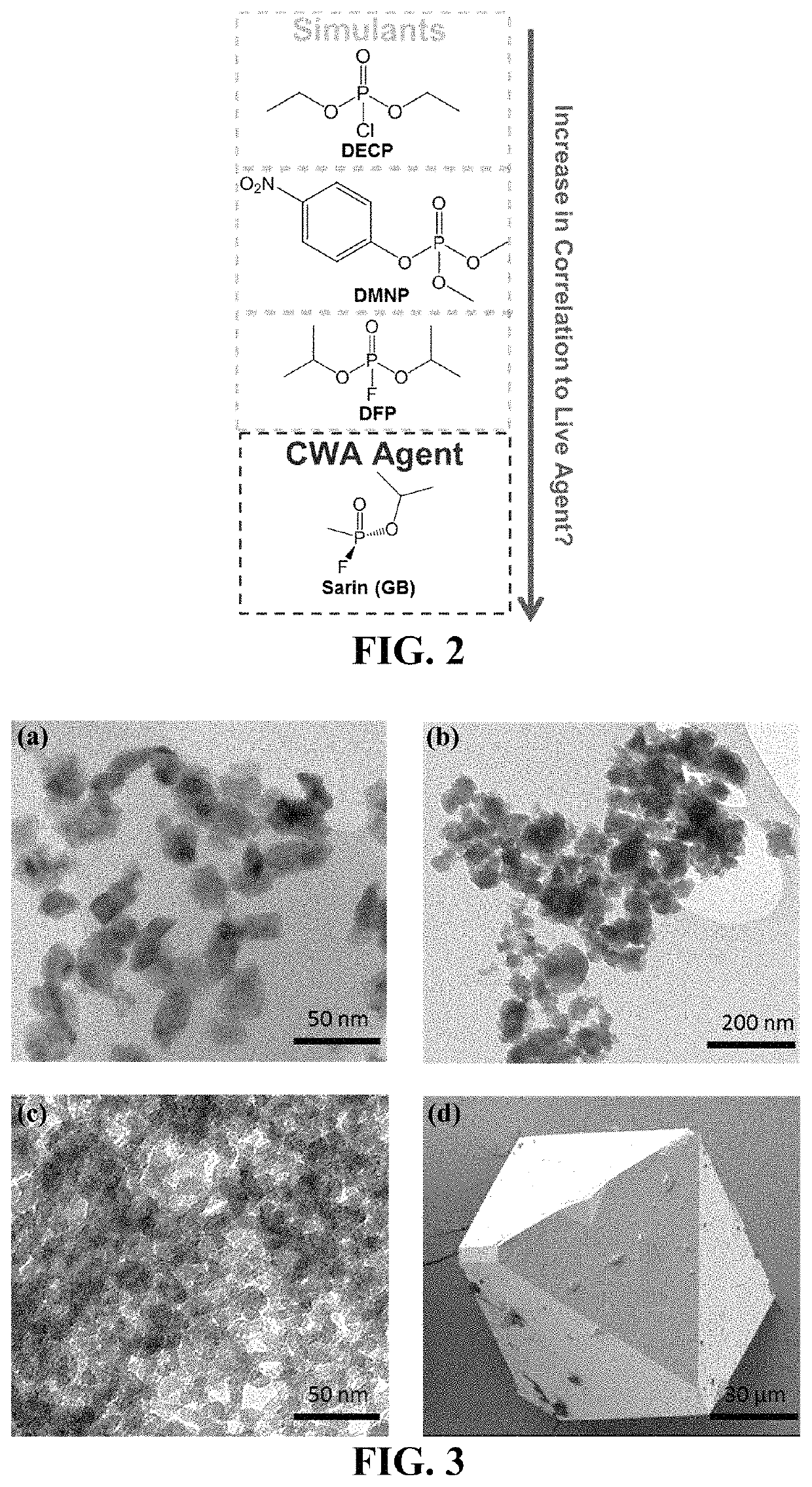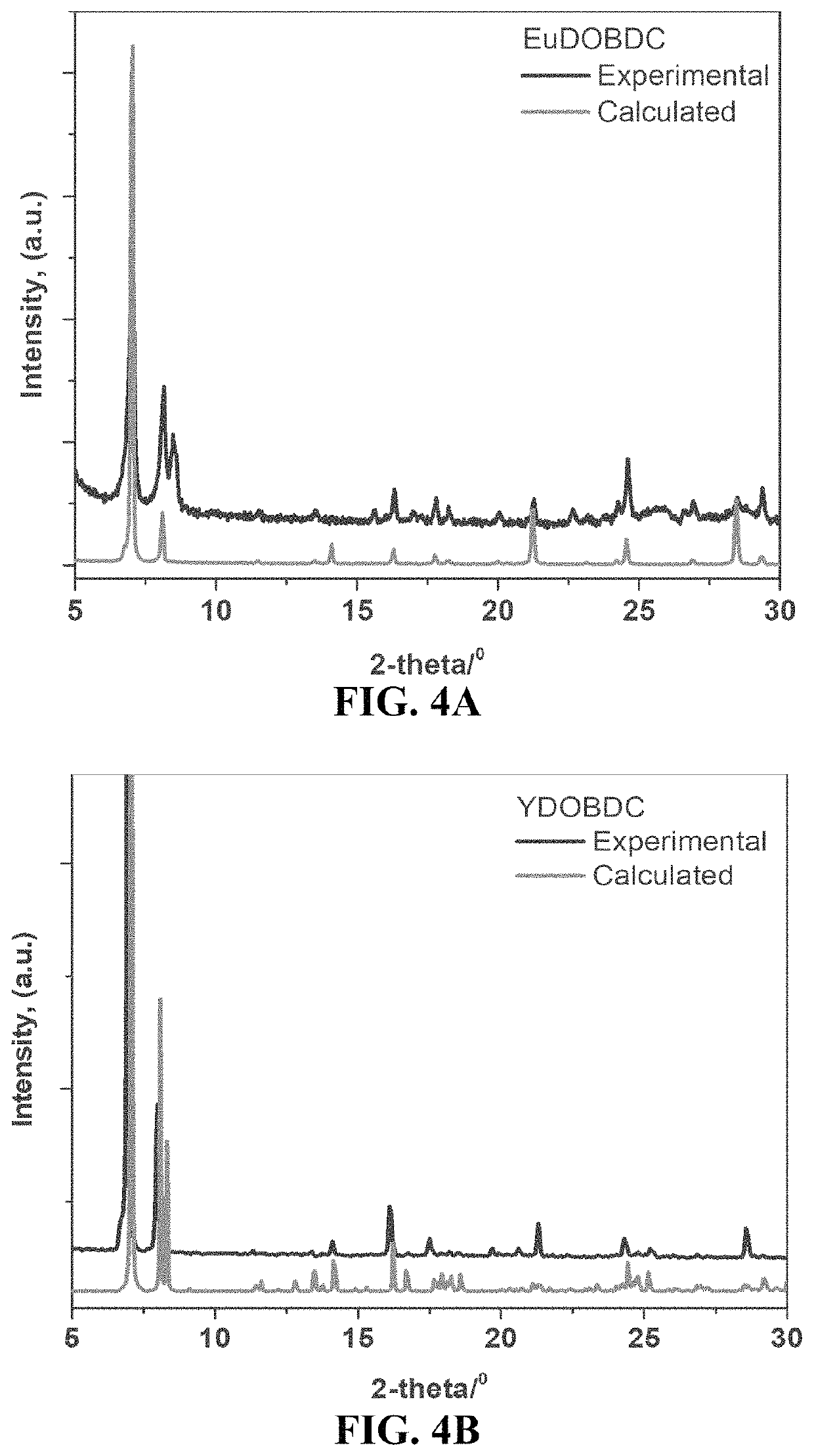Degradation of chemical agents using metal-organic framework compositions
a technology of metal-organic framework and chemical agent, which is applied in the direction of organic-compound/hydride/coordination complex catalyst, physical/chemical process catalyst, chemical apparatus and processes, etc., can solve the problems of difficult decontamination of chemical agents, reduce the severity of disease, reduce the frequency of occurrence or severity of disease, and reduce the extent of disease
- Summary
- Abstract
- Description
- Claims
- Application Information
AI Technical Summary
Benefits of technology
Problems solved by technology
Method used
Image
Examples
example 1
on of Organophosphates in Water-Free Environments
[0114]Herein, we describe the degradation of organophosphates (chemical warfare agents (CWA) and simulants) in water-free environments via a catalytic process using metal-organic framework (MOF) materials. Currently, there are no efficient countermeasures for the deactivation of organophosphates in contaminated electronic equipment, such as electronics, instruments, and communication devices. These sensitive electronics are incompatible with existing water-based / corrosive decontamination technologies. As such, there is a need to discover new technologies for the decontamination of sensitive electronics without causing damage.
[0115]In particular, we describe the catalytic activity of metal-organic frameworks towards the water-free degradation of organophosphates, such as chemical warfare agents, (e.g., Sarin and Soman (nerve agents), HD (blister agent), and simulants (diethylchlorophosphate (DECP), dimethyl nitrophenylphosphate, or dii...
example 2
Synthesis of MOF Compositions
[0117]The following provides exemplary synthesis of MOF compositions. Modifications of these synthetic protocols may be employed to arrive at the desired compound, as would be understood by a skilled artisan. Additional protocols are provided in Sava Gallis D F et al., “Multifunctional, tunable metal—organic framework materials platform for bioimaging applications,”ACS Appl. Mater. Interfaces 2017; 9:22268-77 and its Supporting information (16 pp.); and Sava Gallis D F et al., “Efficient MOF-based degradation of organophosphorous compounds in non-aqueous environments,”J. Mater. Chem. A 2018; 6:3038-45 and its Supporting information (10 pp.), each of which is incorporated herein by reference in its entirety.
[0118]Synthesis of EuDOBDC: The reaction mixture containing EuCl3.6H2O (0.0689 g, 0.087 mmol), 2,5-dihydroxyterephthalic acid (DOBDC, 0.0544 g, 0.087 mmol), 2-fluorobenzoic acid (2-FBA, 0.5760 g, 4.12 mmol), N,N′-dimethylformamide (DMF, 8 mL), H2O (2 m...
example 3
MOF-Based Degradation of Organophosphates in Non-Aqueous Environments
[0126]Decontamination of sensitive electronics exposed to chemical contaminants such as chemical warfare agents (CWAs) is generally incompatible with existing water-based / corrosive methods. The development of new chemistries to tackle this challenge is of great interest. Here, we investigate the effectiveness of metal-organic frameworks (MOFs) to degrade organophosphates in non-aqueous environments, via a combined experimental-molecular modeling study. Emphasis is placed on understanding the effect of framework characteristics (metal identity and linker functional group) on the methanolysis of these toxic chemicals (e.g., organophosphates), along with identifying reactivity trends for relevant sarin (GB) simulants.
[0127]Several representative materials based on a hexanuclear metal cluster were judiciously selected, including the well-known catalytically active MOF, UiO-66. Complementary insights into the vibrationa...
PUM
| Property | Measurement | Unit |
|---|---|---|
| diameter | aaaaa | aaaaa |
| diameter | aaaaa | aaaaa |
| diameter | aaaaa | aaaaa |
Abstract
Description
Claims
Application Information
 Login to View More
Login to View More - R&D
- Intellectual Property
- Life Sciences
- Materials
- Tech Scout
- Unparalleled Data Quality
- Higher Quality Content
- 60% Fewer Hallucinations
Browse by: Latest US Patents, China's latest patents, Technical Efficacy Thesaurus, Application Domain, Technology Topic, Popular Technical Reports.
© 2025 PatSnap. All rights reserved.Legal|Privacy policy|Modern Slavery Act Transparency Statement|Sitemap|About US| Contact US: help@patsnap.com



